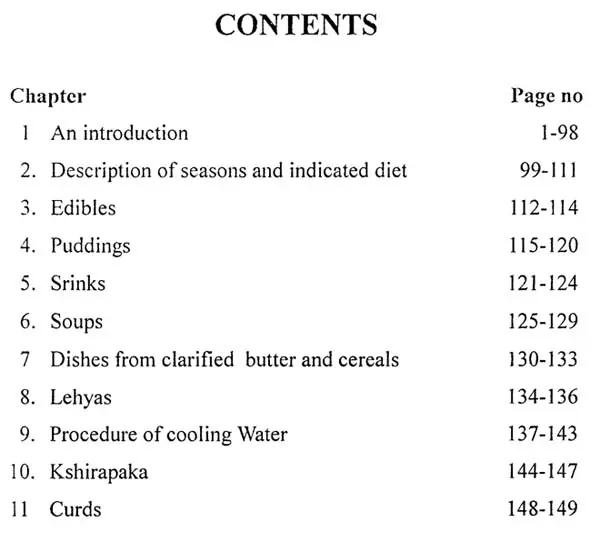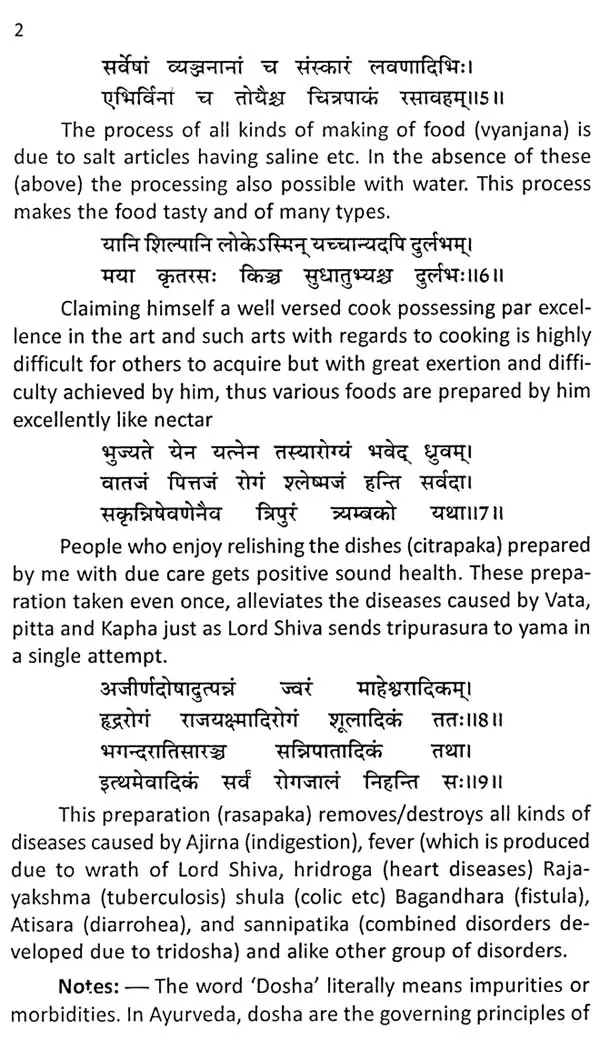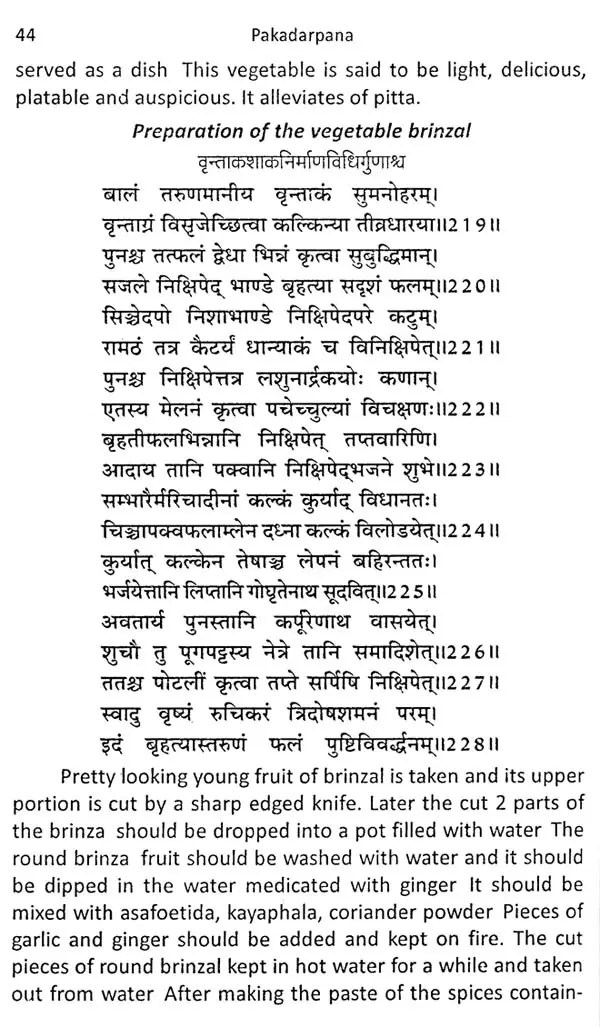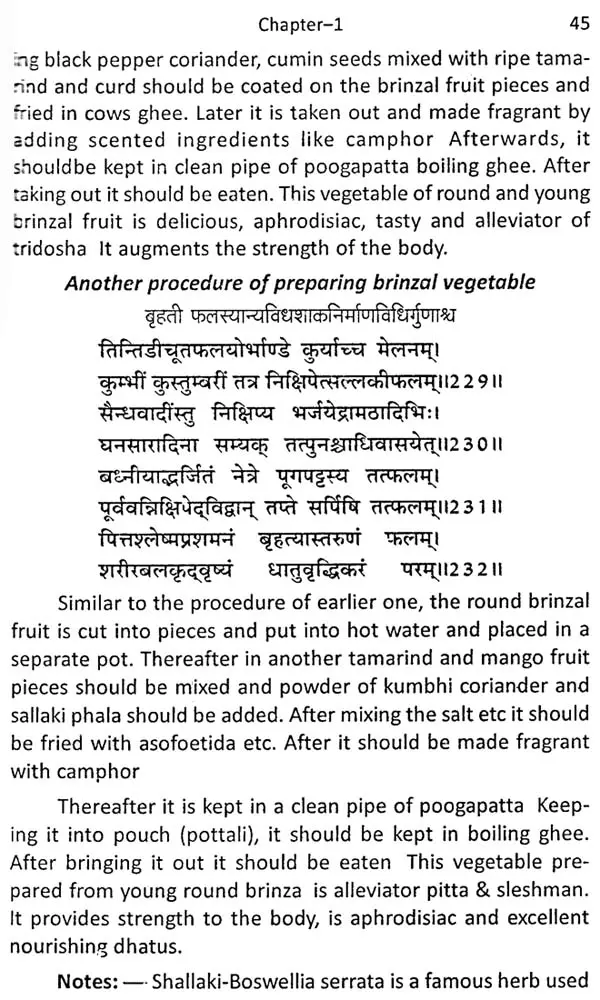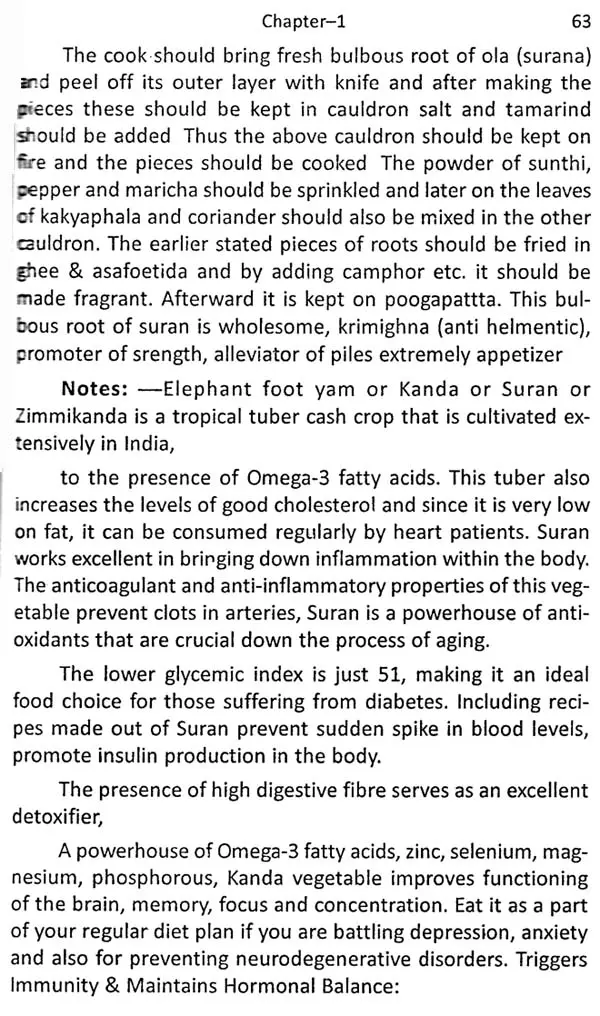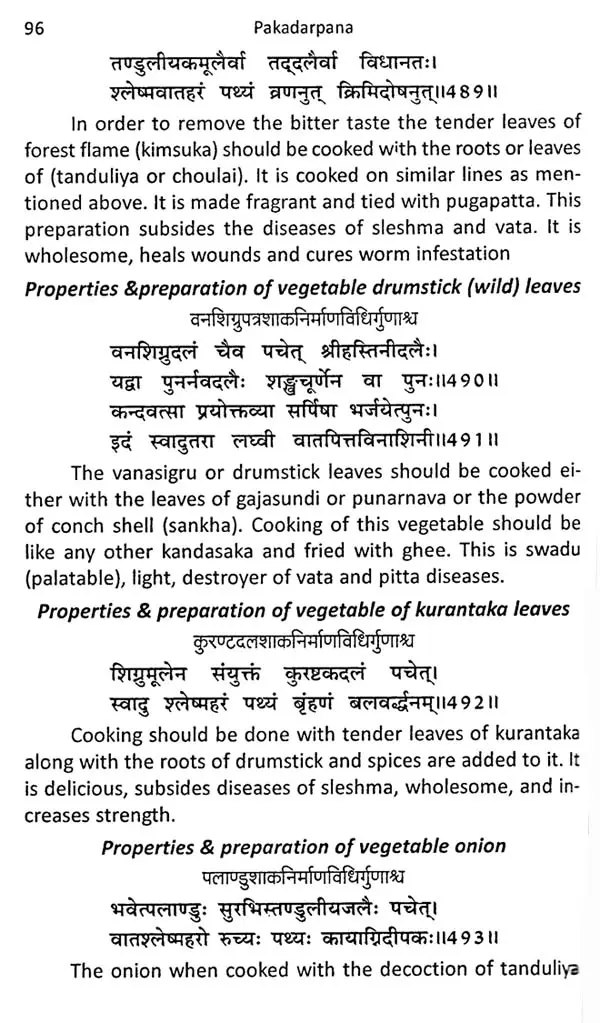
Pakadarpana of Nala - Text And English Translation With Critical Notes (Krishnandas Ayurveda Series - 187)
Book Specification
| Item Code: | UAT428 |
| Author: | P. Srinivasa Rao |
| Publisher: | Chowkhamba Krishnadas Academy |
| Language: | English |
| Edition: | 2022 |
| Pages: | 149 |
| Cover: | PAPERBACK |
| Other Details | 8.40 X 5.40 inch |
| Weight | 150 gm |
Book Description
The present book is the English translation of "Pakadarpana of Nala" in simple language. Most of the instances I have tried to explain ayurvedic terms so as to ease the reader who are not familiar with the subject of Ayurveda.
We get references that in Mahabharata (400BC) Kshatriya kings and princes enjoyed a rich variety of food, including meat and alcoholic drinks; two of them - Nala and Bhima - were well known for their expertise in supasatra, science of cooking. Nala's culinary repertoire became so familiar that ultimately the word Nalapaka became a synonym in India for excellence in culinary arts. Although the exact dating of this manuscript is unavailable, According to epic tradition, King Nala's pakasatra (science of cooking) was documented in Pakadarpana. This text presented in different interpretations, and one of them was printed in Sanskrit in Banaras in 1915. Various translations available for this work in regional languages. It is interesting to note that an impressive array of vegetables, meats, spices, flavoring and souring agents as well as culinary techniques were used in the preparation of these dishes. Spices, mostly native to India (or those that arrive early on) such as black pepper, long pepper, ginger, cinnamon, cardamom, cumin, coriander, asafetida, fenugreek, and saffron were used in spicing meats and vegetables. Strikingly, the spices that succeeded later such as chili pepper, nutmeg and mace are absent. Spices were used in different ways- as whole or powdered or fried in ghee or mixed and tied as bouquet garni.
Most recipes call for kasturi (curcuma aromatic) a fragrant variety of turmeric root instead of ordinary turmeric (curcuma longa). Other than kasturi, camphor and kevra (screw pine pandanus fascicularis) were also used to add fragrance to dishes. It is intriguing to notice that fragrant flowers were also used in this ancient cuisine to impart aroma to cooked food.
Many of the ingredients used in these recipes that are not commonly found in Indian recipes Various herb ingredients have beneficial medicinal properties and are still used in Indian herbal medicine Ayurveda. This cuisine realized the advantage of using different types salts and specifies whether to use sea salt or rock salt in specific recipes. Lactic fermentation was familiar, and yogurt and ghee were made. Ghee and sesame oil were the fats used. Yogurt, Indian lemons, tamarind, pomegranate and mango were used as souring agents.
Cooking was done mainly on wood burning stoves and common cooking methods used were boiling, pan frying, and deep frying. Tempering asafoetida and other spices in small quantities of ghee to bring out their flavor was familiar to this cuisine. It is to be noted that wrapping partially cooked food in areca palm leaves and frying them in ghee. Later the leaf package was opened, and the food was served. These recipes speak volumes about the expertise in high class cuisine that was prevalent in ancient India.
I am thankful to Chowkhamba Sanskrit series Office, Varanasi for their kind co-operation in composing and publishing this book.

